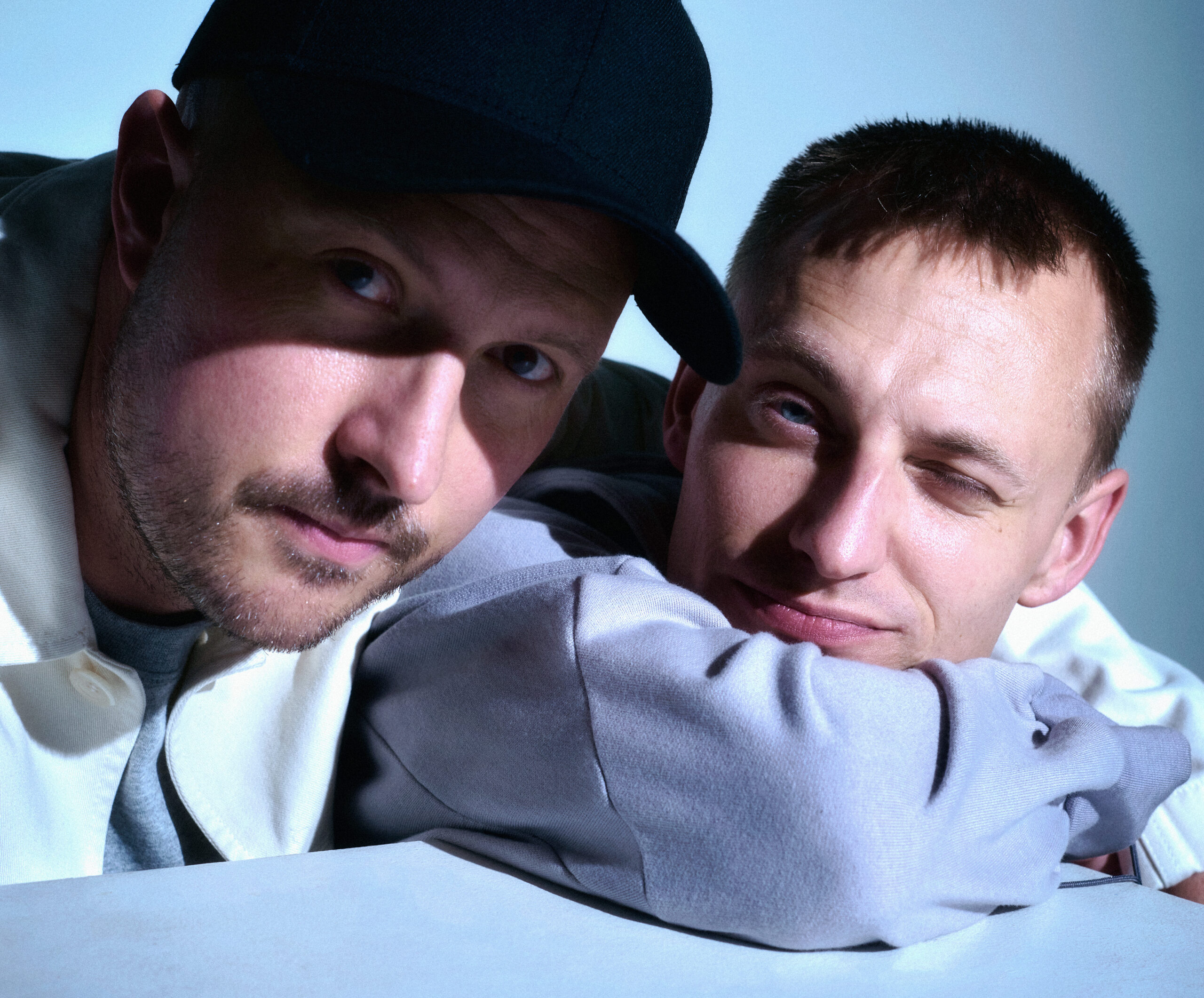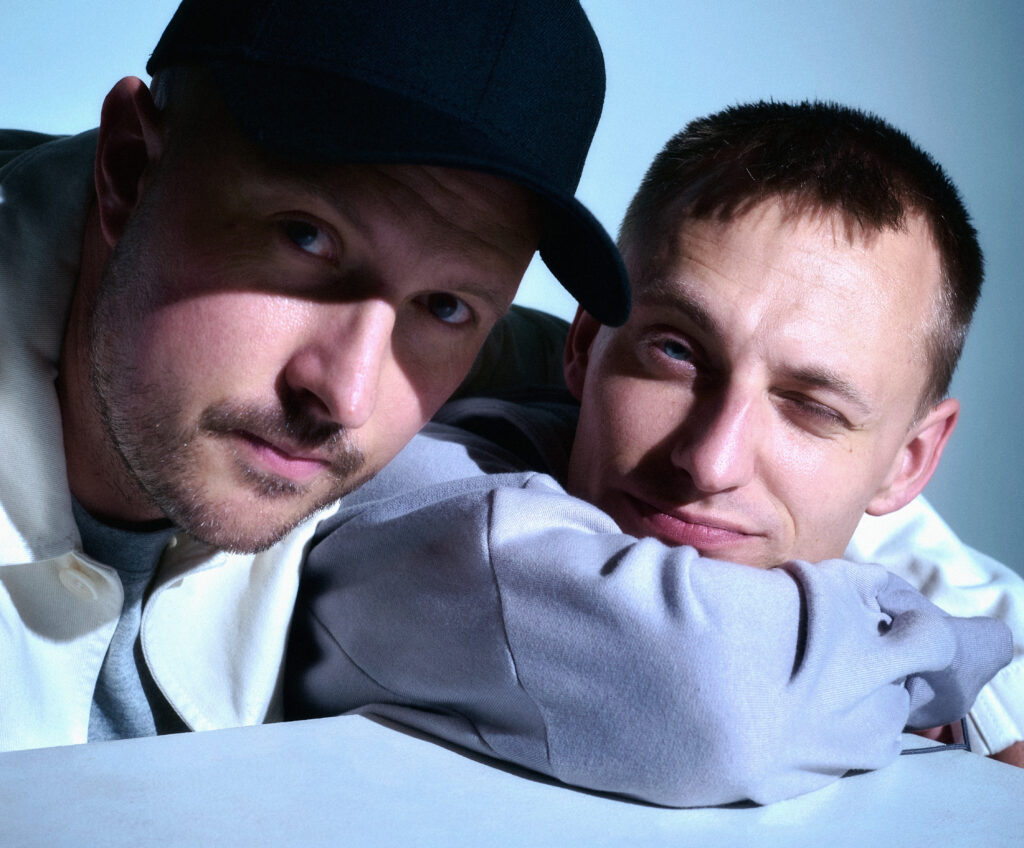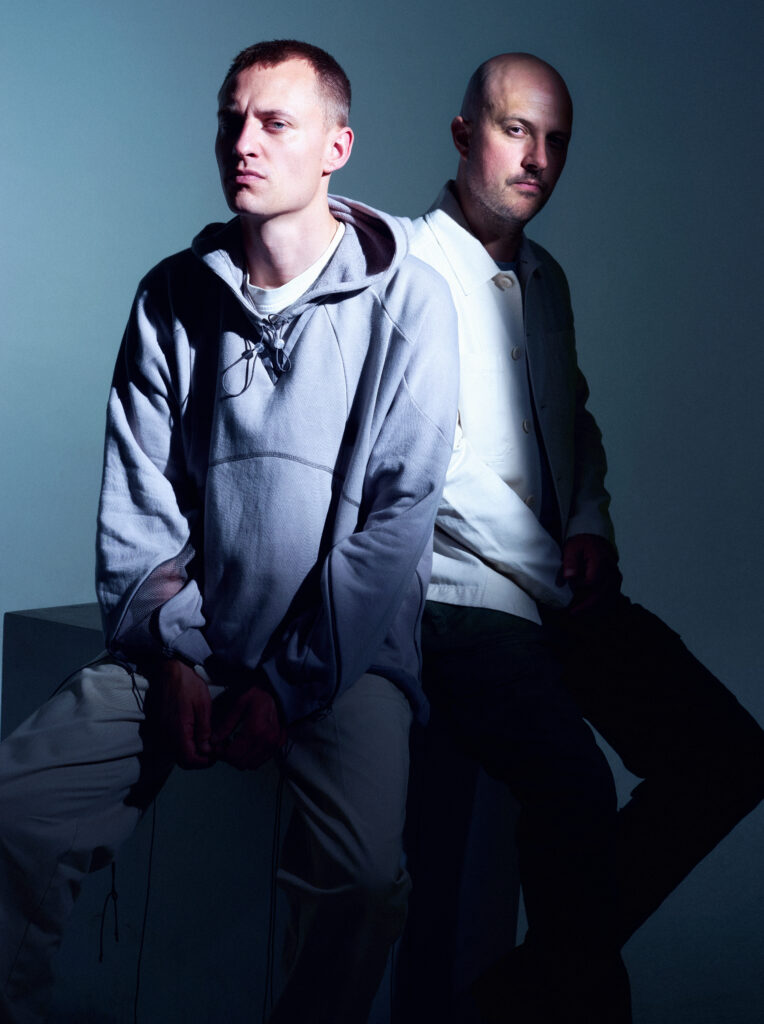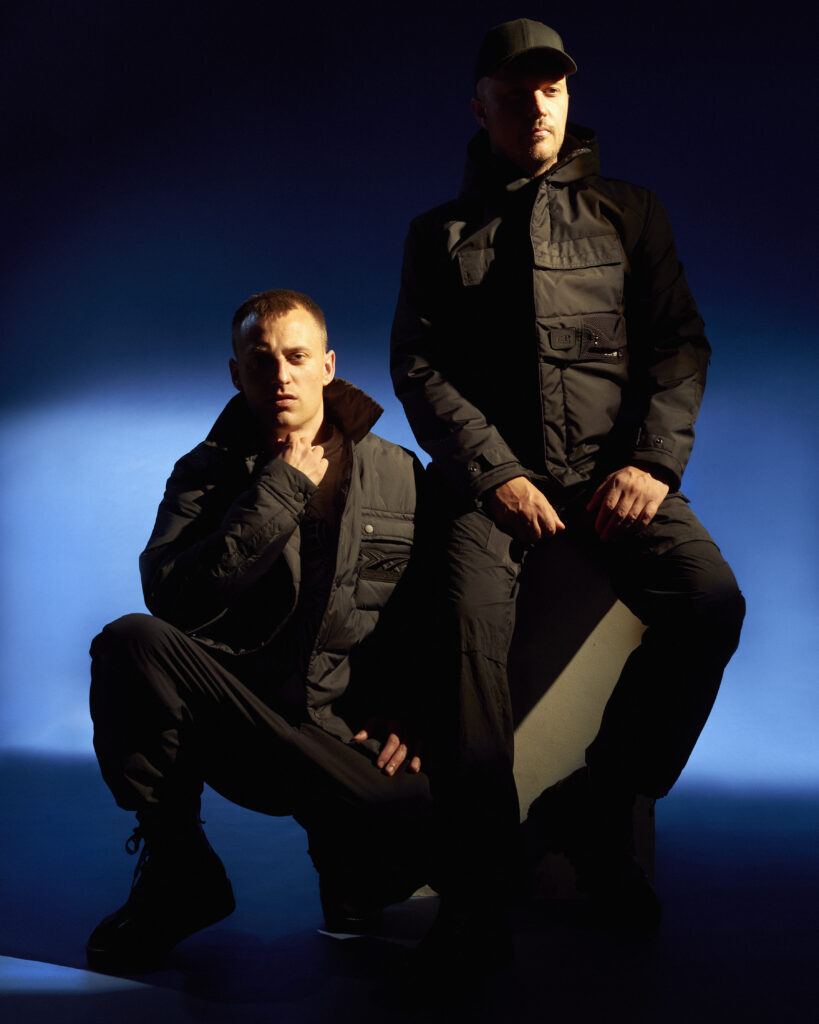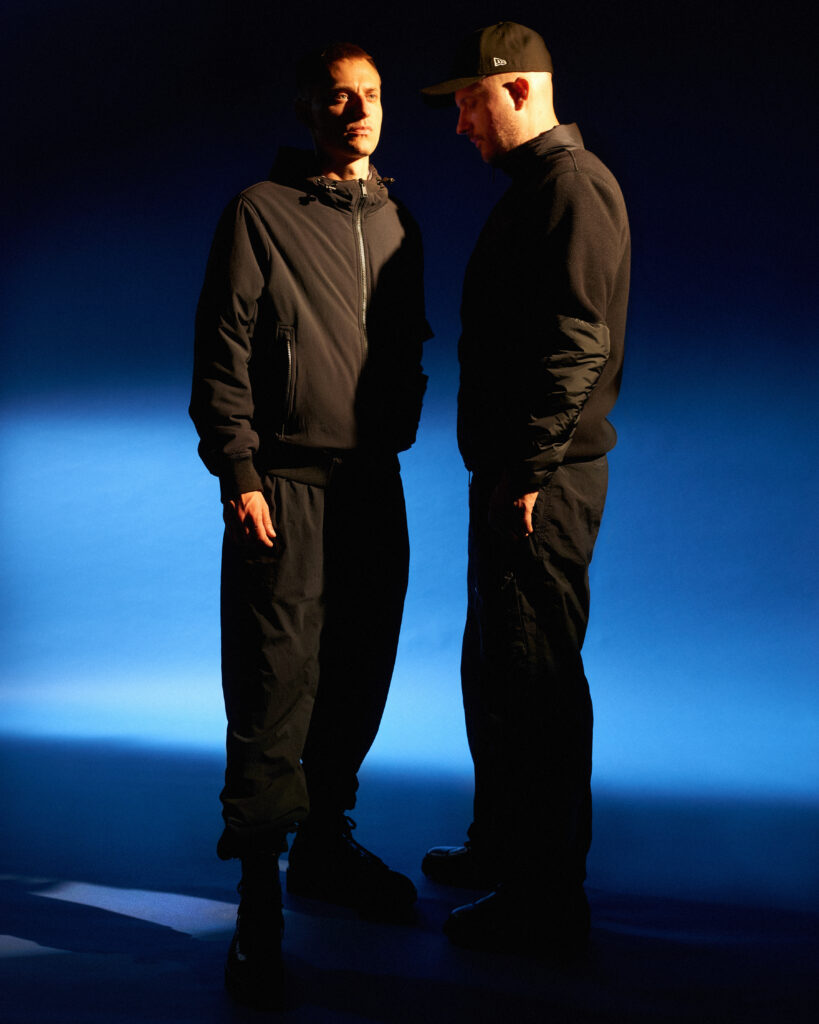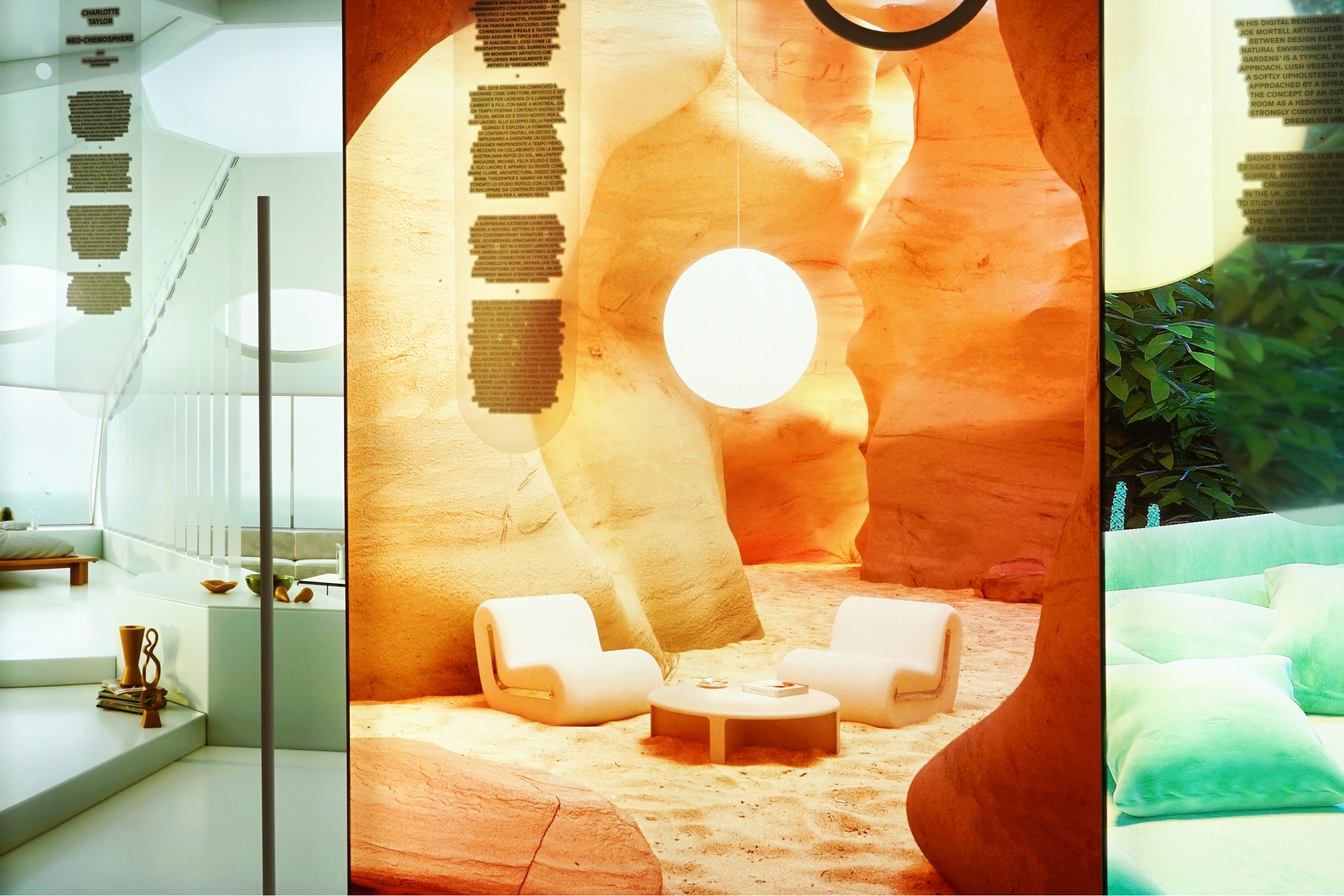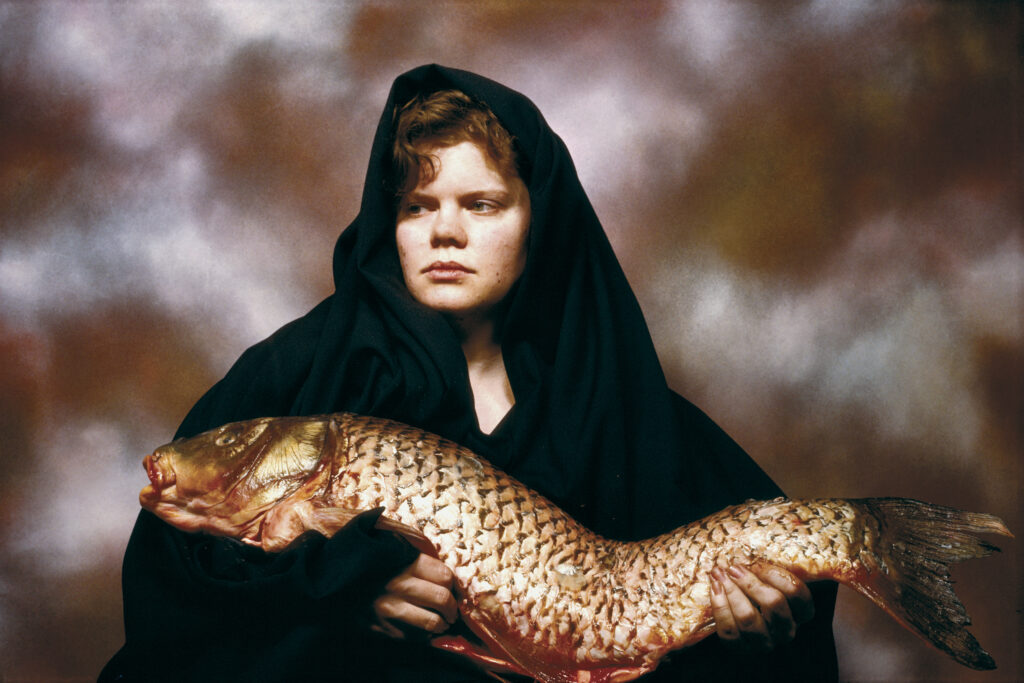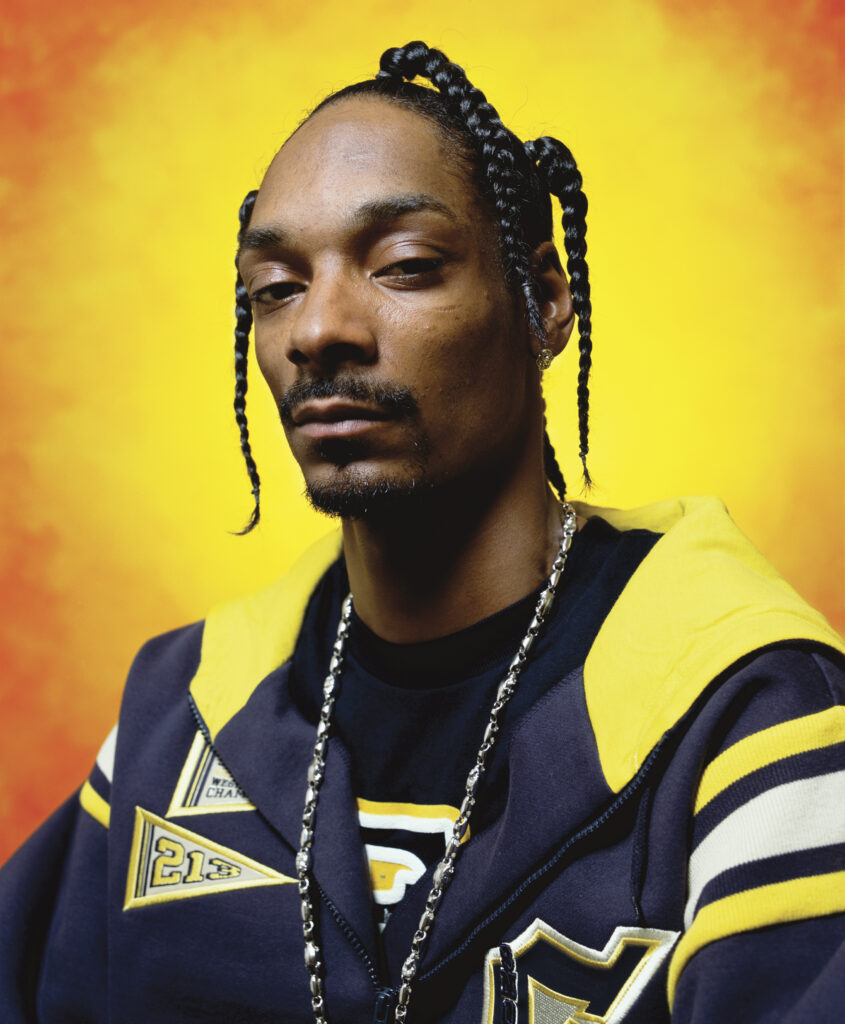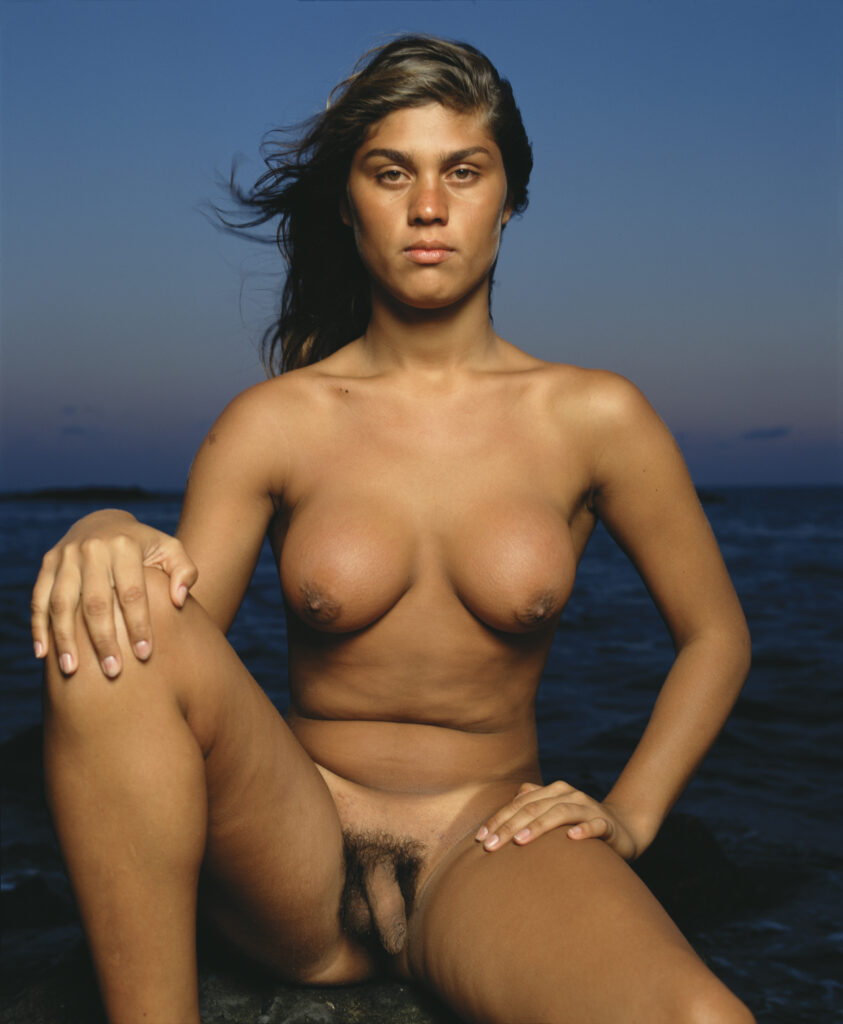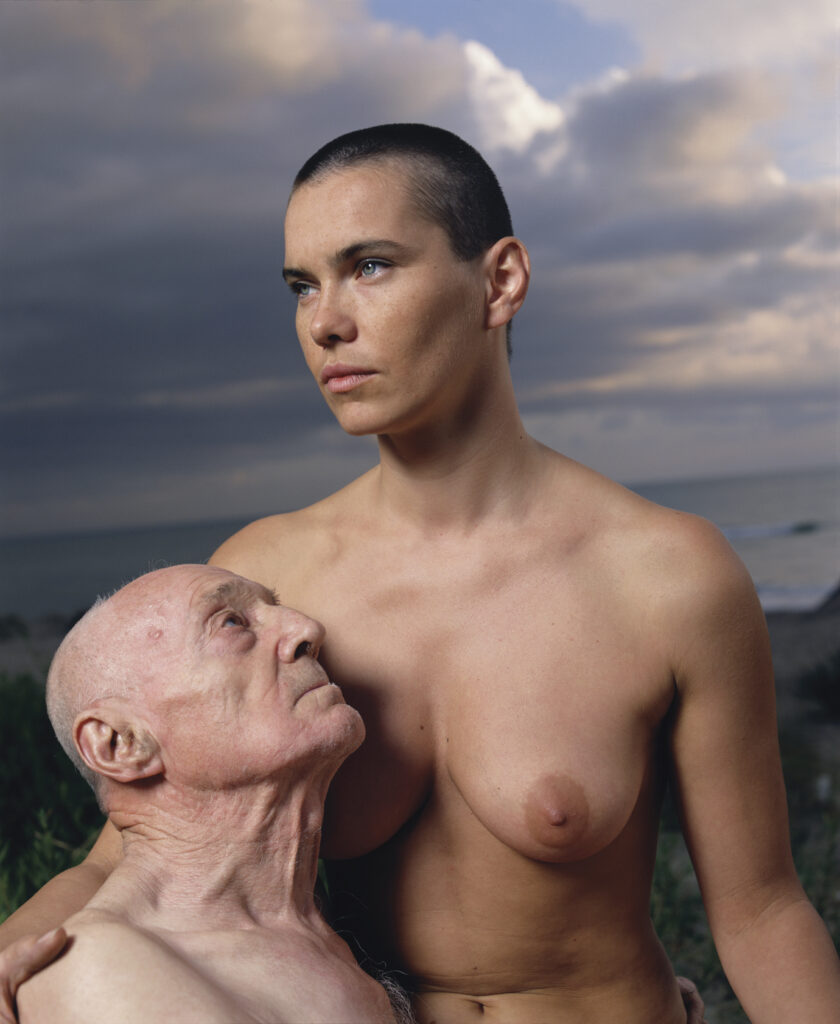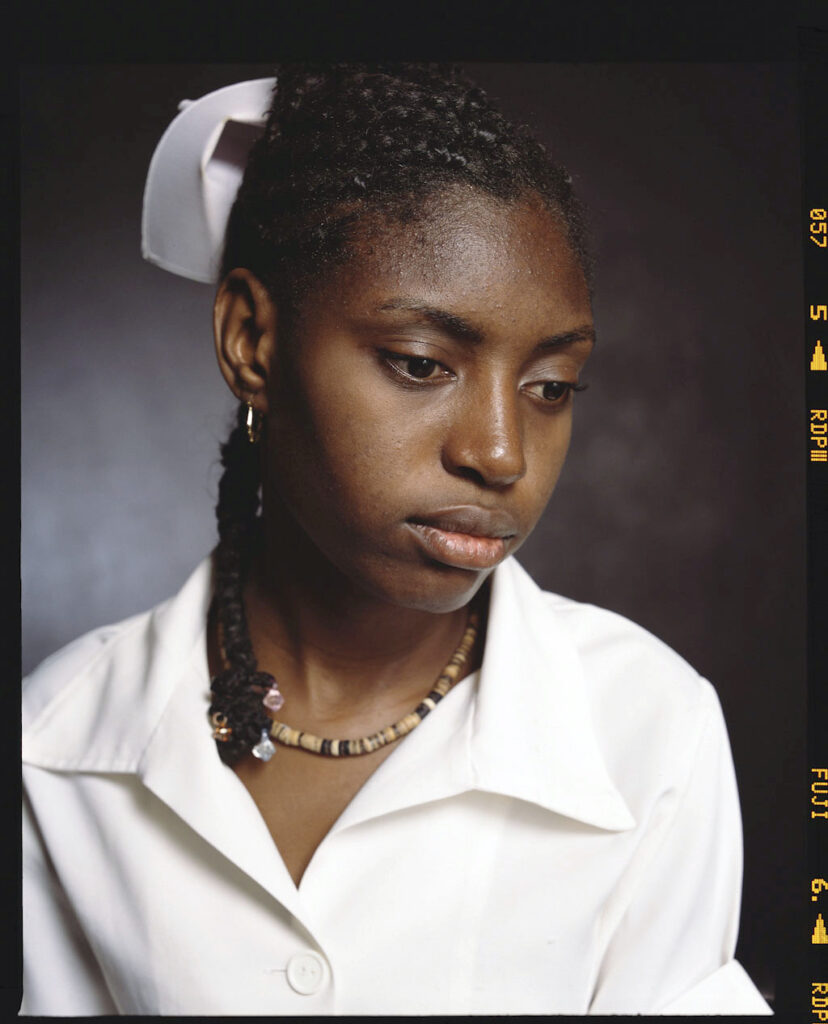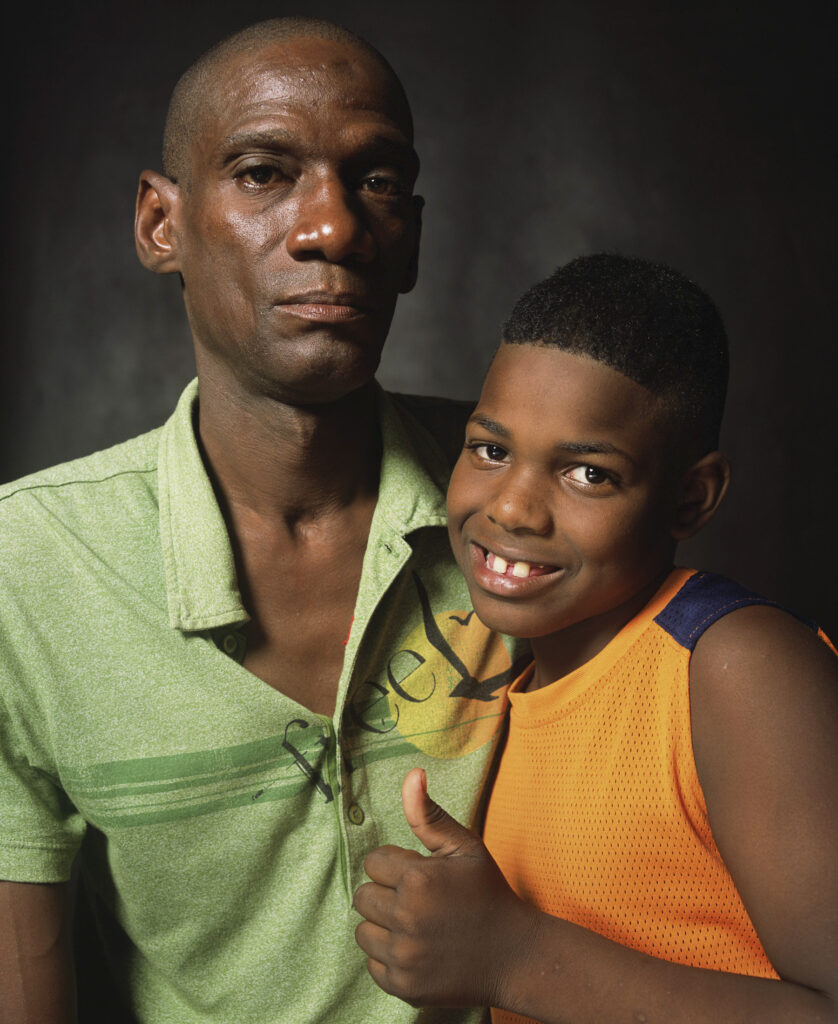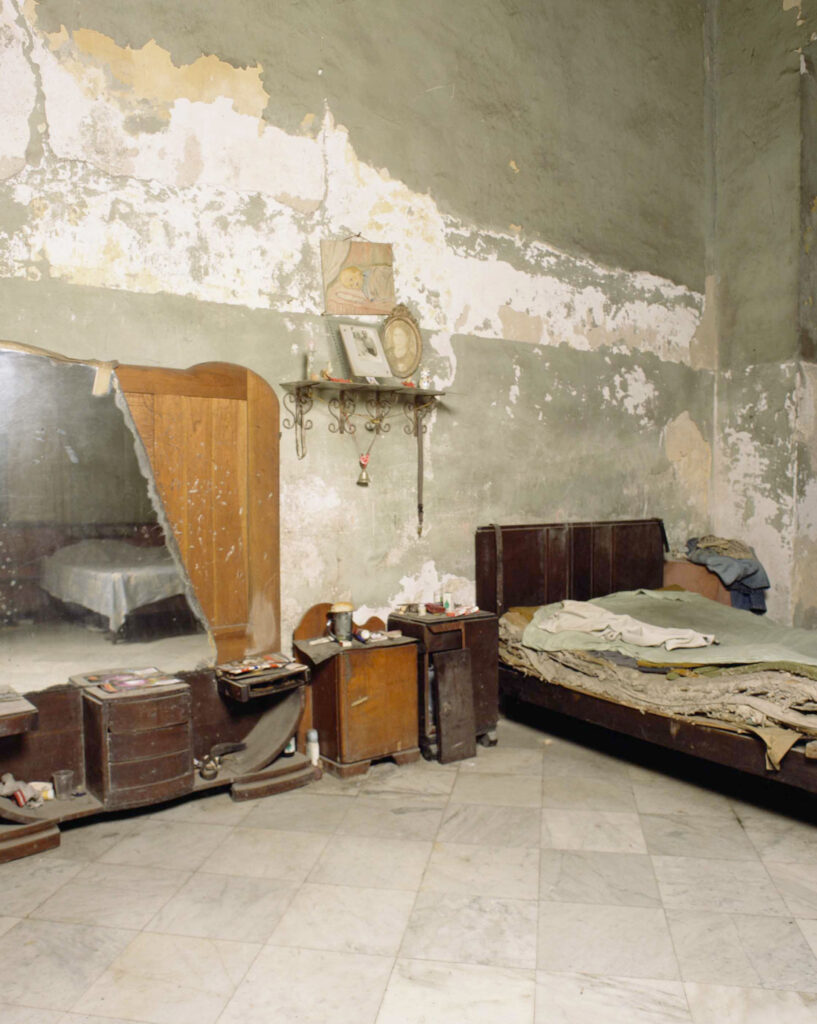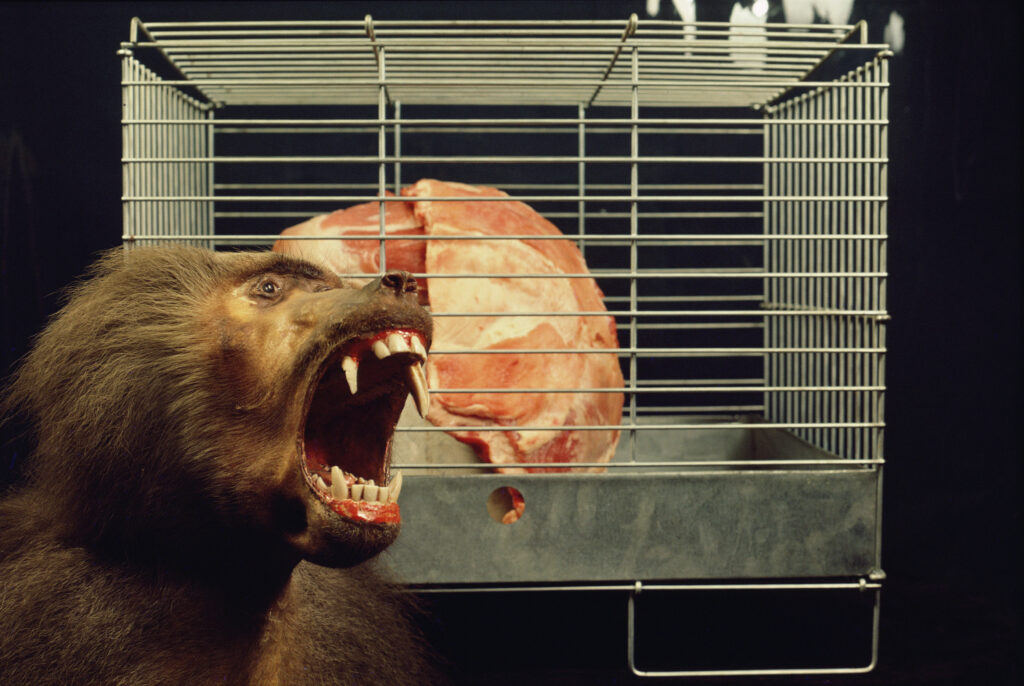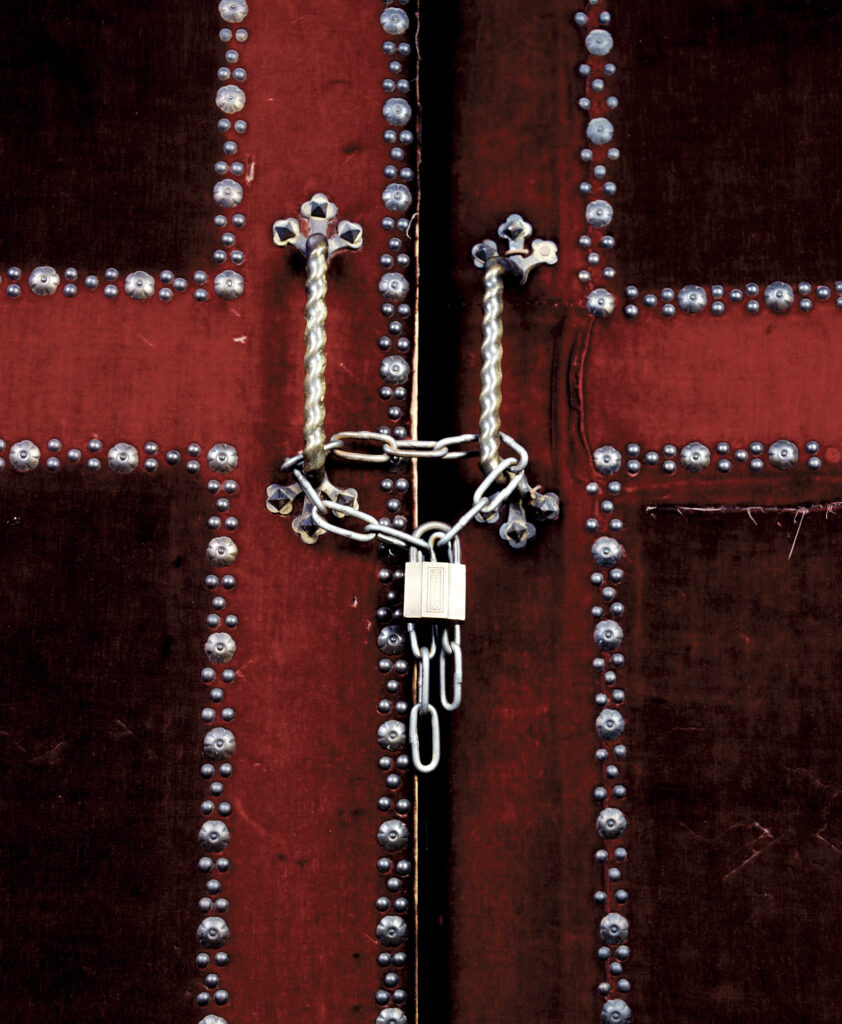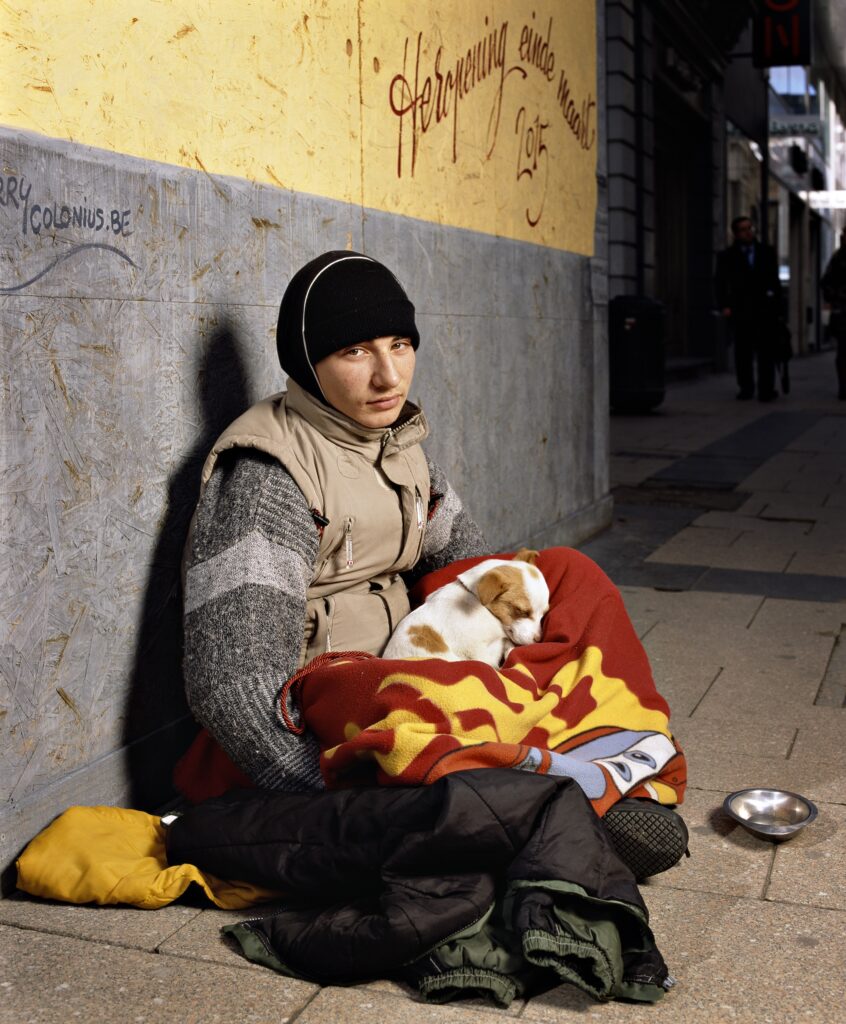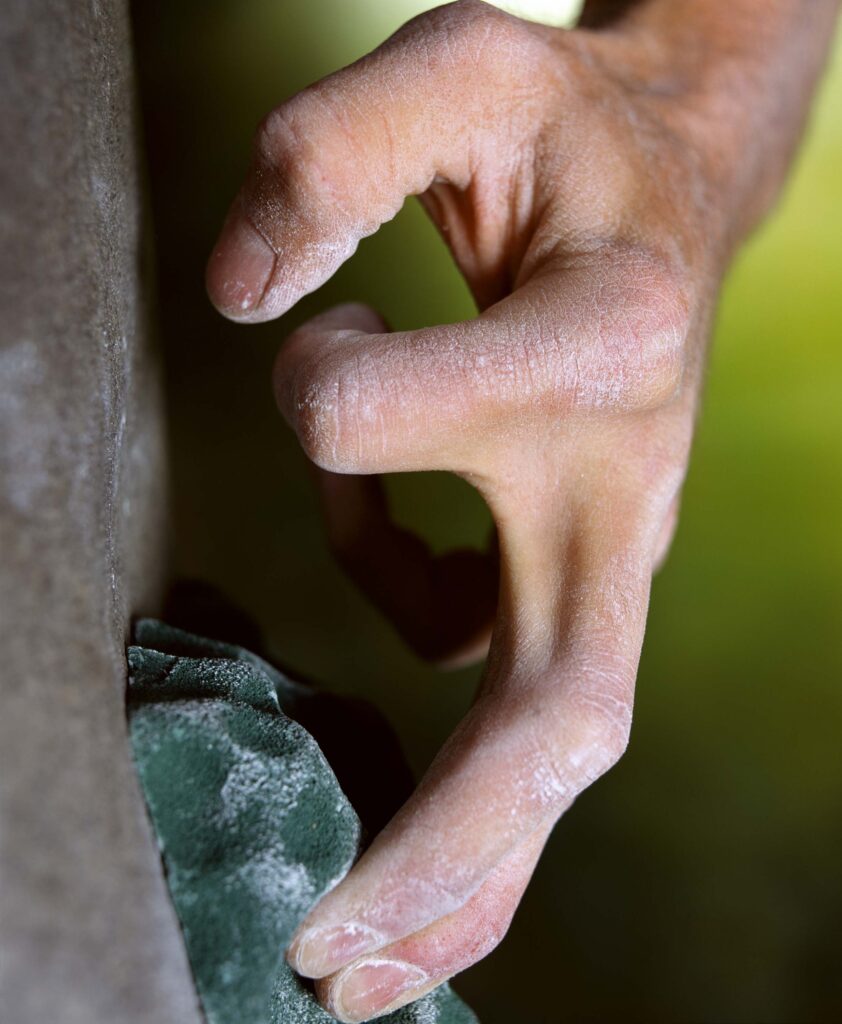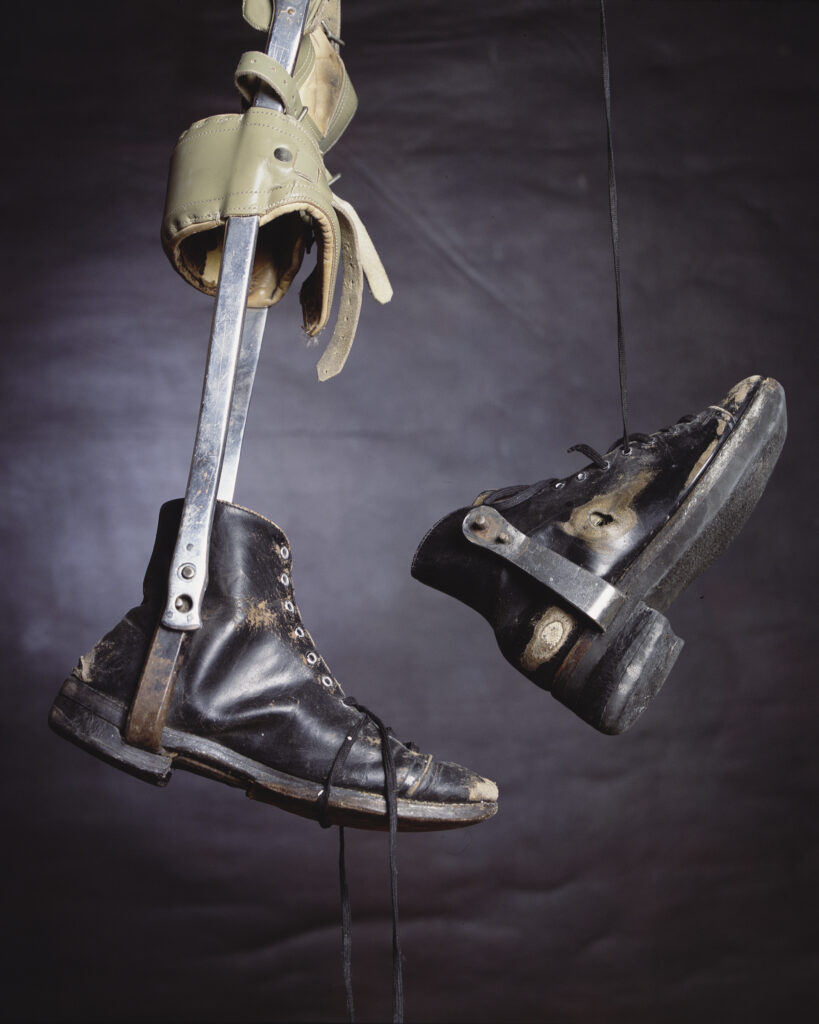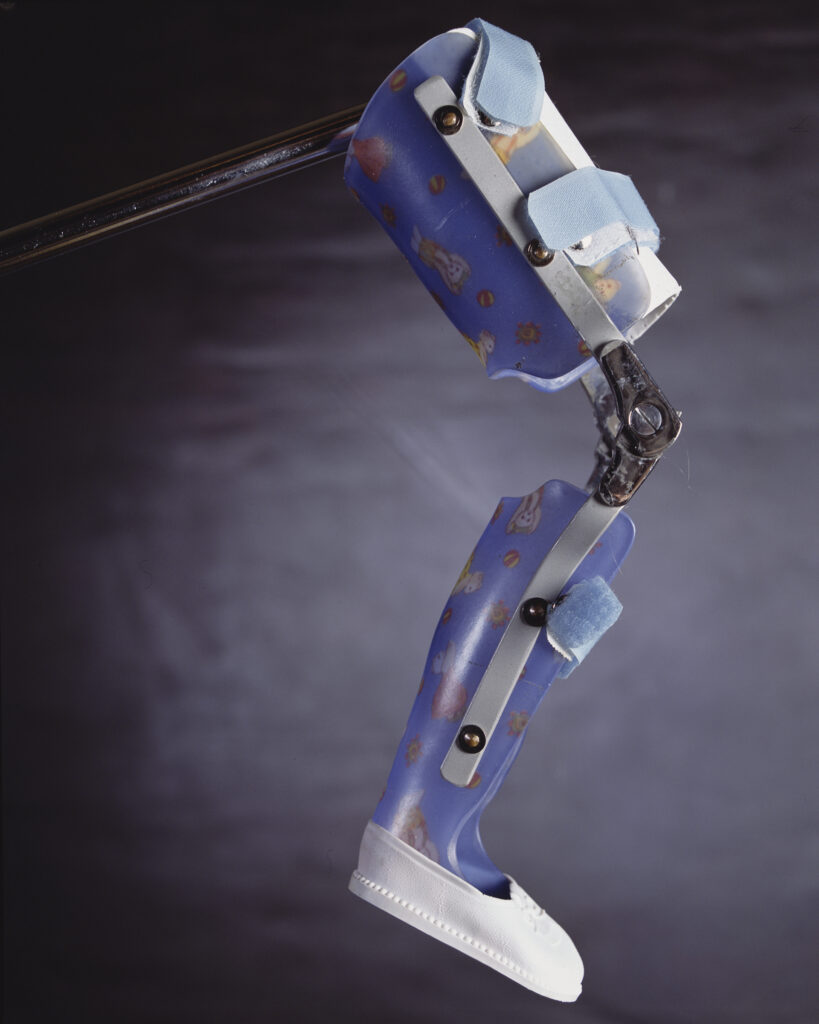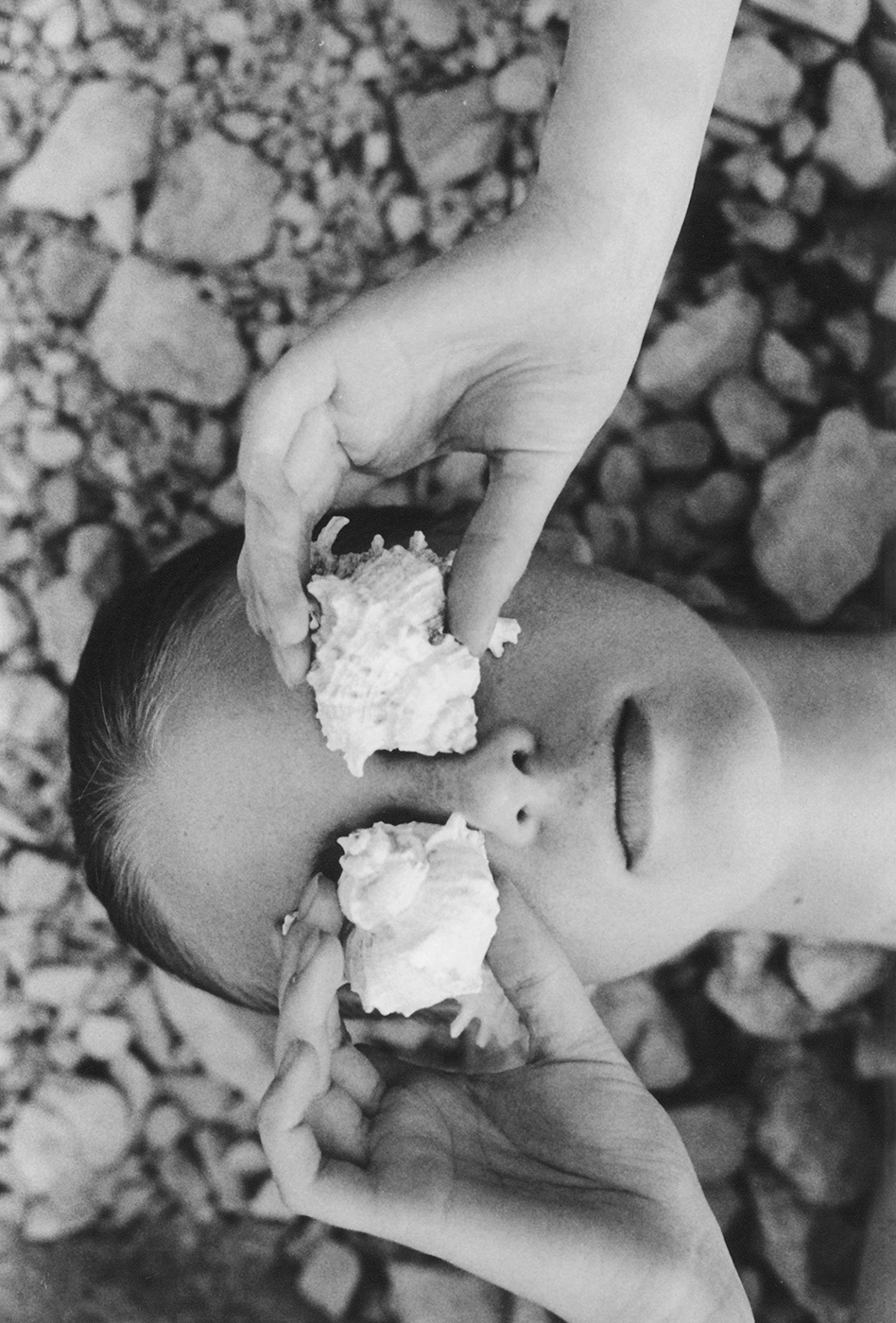Abstraction and distortion in art come out intuitively to George Rouy along with human emotions and relationships
In his earlier artworks, George Rouy would paint elongated facial features for the wide bodies of his subjects. He would stretch the figures on the canvas through his strokes, and at times, have them sit or stand side-by-side as if conversing.
Then, around 2021, a shift took place.
Gone are the visible features of the face, replaced by intentional marks and lines guided by the haze of the moment, his creative spirit being summoned to life. Smudges of paint brush against a mosaic of splatters. Flecks of color shower dedicated spaces on the canvas. The figures still appear visible, yet invisible at the same time. They might be tall or short. Their genders, androgynous. They are colliding, manipulating the viewers first, then they sync, re-arranging themselves like puzzle pieces and letting their viewers know everything falls into place in the end. Rouy, an aficionado of abstraction, has transitioned, and he is introducing an evolution of his artistic practice.
The bodies in Rouy’s artworks evoke an innate sense of connectivity and transcendence. They trespass the realms of the physical and the beyond, almost anchoring an indescribable reason they visually came into sight in the first place. They might be five different characters Rouy brewed in his mind, but they could also be an individual with five versions of themselves. Deciphering the intention of Rouy’s paintings depends on the viewers, but the artist creates a two-way channel in his works. For every painting the viewers see, Rouy seems to ask them to trust him with their deep-seated thoughts, emotions, and fears and let him paint them through his style. For every painting he creates, Rouy stirs human sensations until he delivers.
NR wants to learn more about the psychedelic nature of Rouy’s works and mind, the desire that powers the artist to pick up his brush and lose himself in the moment of painting. When we caught up with the artist, he was in the middle of finishing some artworks for his next show. He would be flying out of the UK in the next couple of days, leaving the 12 paintings he was working on simultaneously for a while inside his studio in Kent, London. At one point, Rouy tells us he paints intuitively. He scraps off planning and gears toward illustrating what feeds his mind, whether based on his experiences or observations. Somehow, themes of interactive relationships, self-growth, therapy, and psychology bubble up and simmer in his paintings. These nuances might be implied, but one can see how they linger in Rouy’s works, drawing in whoever lays their eyes upon his paintings and locking them in there.
At first, NR wanted to ask Rouy whether he had always wanted to be an artist, then move along wherever the conversation would take us. But even before we asked him the question, Rouy had already let us in on what he would be doing in the next few days. A lot of it involved traveling, ruminating, finding breathing space, and looking at his artworks as he sits or stands before them, idling. The moment he spilled all these thoughts, we shifted our questions, inverted-pyramid style. From the role of energy in his artworks to the culmination of his present style, Rouy talked us through his artistry, influences, and life as an artist, revealing parts of himself that might be under wraps from the public’s eye.
We started with his travels.
Does consistent traveling affect your creative process?
I think yes. What I have found over the years of doing this is that I have times of concentration or intense work then a break. I have found that my creative process works a lot better now where I relentlessly paint all the way through before I try to find breathing space. For instance, I have solidly worked for a month now, and I will be taking a few weeks off just to ruminate and process. Then, I will come back and look at my works with fresh eyes. I see what I have done objectively and more since I have taken off some emotions and am now able to see what needs to change or shift. In that respect, traveling works well.
I also often find myself preparing for a show, so it is good to have the works just sitting in the studio for quite a while, just to live with them. They can breathe and have their own life without me working relentlessly on them all the time.
What is your breathing space? Do you intentionally create your own breathing space, or do you just do random activities?
Walking, for instance, on a day-to-day basis is breathing space. Strolling in the countryside is a great way for me to process parts of the day, especially in the summertime. I find it harder to find my breathing space in winter because of the lack of light – it is always dark when I leave the studio – but I love to think of other ways to take some time off. Currently, I am between here (Kent) and Paris.
In Paris, I work more on the computer, study my art, and think about where the series is at. I was there a month ago looking at the paintings I already had in the studio, took photographs of them, then looked at them through Photoshop, just to process everything in a different way. Then, I am just actively looking at my works, and I think it is important. The act of looking also takes up time since my paintings become jigsaw puzzles, and I try to work out the next parts. Sometimes, it just does not quite click at the moment, so I let it simmer for a while before looking at it again.
I have come to a point where I need to take some time off and come back to the studio once I feel rested because I get so caught up in the energy.
“I think painting is about having and regaining this energy and preserving the excitement, impulse, movement, vibrance, and emotions, especially because the works become a lot more abstract in areas.”
These works also need a sense of clarity, so I am trying to find and maintain that as much as I can. When I have a few to 12 paintings at the same time in my studio, I often jump from one artwork to another, so the energy gets transferred quite easily. I am conscious that when I quickly shift, things stagnate, or when I work on one painting for too long, something sucks the magic out of the artwork. It loses the spell it once had.
Since you put it in this way, does painting ever get overwhelming for you?
There is this idea that you have higher expectations of yourself at times, and you are constantly searching for more discoveries, so you never get quite content with the discoveries that you have already found. I think the overwhelming part is to maintain these high standards of and by self. When you reflect or get to a point when you look at some of the works you did that you felt successful, you look back to how you did in the past.
It is not that you are trying to top or match them, but I think this is where it gets overwhelming, when these successes are not happening now. When this happens, you push through it – you work through it until things reveal themselves. It is like when we plant a seed, it takes time before the plant fully grows.
I notice that some of the facial features of your subjects are blurred. Is that intentional?
The faces anchor the work and the composition. They can also be a distraction that ultimately defines the work – it is about having the right amount of purpose to them. I am into abstraction, and the blurred faces break emotions and sensations by delivering physical marks in the painting. When I start to apply them, I begin to see that everything becomes emphasized while they also contradict each other. The face is about having blurred moments of life, and having these pushed out in distorted ways allow the works to have the same breadth.
Sometimes, it is hard to explain. They just have an energy about them and a certain feel that is not of this earth – it is not from here. It is not even photographic. There is a clear distinction between these faces when they appear right, but when they do not, there is this balance between the ugly and the beautiful – transcendence and out of this world. These days, I am more into computer-generated faces or AI and the historical representation of a figure within a sculpture. Here, I can distort the face, making them heightened versions of humans. I also think about the idea of distortion or blurring as something that is not quick, but a time-based movement that links with the rest of the marks in the painting. They turn out to have the same amount of flow and energy.
Would you say then that your paintings are energy-based?
Not entirely energy-based, but they have an awareness of the physical in terms of their anatomy, time, and movement. So, the act of distortion can be hidden – you cannot quite tell how long strokes took or where the moment began. Other things can be visible such as the dancing figures in some paintings.
I notice that you often use lush or dark colors for your paintings. Do you resonate well with the dark palette or do you have any intentions in the near future to shift to bright tones?
Some of them have become brighter, but gray still is important in my work in terms of it sitting between the realms of dark and light and how it can emphasize contrast and complement well with the shades I use. I also like how gray can have different hues like pink gray or greenish gray.
I also notice that you have a lot of bodies on your canvas. How did you arrive at this point that you wanted to turn bodies into the subjects of your art?
It is an uplifting movement for me to have these bodies in my work a sense of connectivity and purpose – of flow, movement, and rhythm. I would say I am someone who has been into exploring figurative painting and how to achieve a painting that has multiple figures in it without giving a headache. I think about the figures as organisms who could be versions of themselves. There could be two people but split up into five figures. It is less about a collective, but a depiction of those you know in a space or non-space.
On the other hand, their meaning depends on how the viewers perceive them. Sometimes, the viewers place themselves in the realm that I created. Other times, they deem my paintings as romantic and soft. There is always an underlying intention to these figures and how they interact. Then, there is also this feeling of morphing, a shaping of an internal representation, of one’s psyche or being, and I think these are massively involved in my works. We are living in this life full of intricacies as an individual and as a collective, and I am thinking about these internal pressures, whether that is beauty, ego, or something else. Similar to how we show other people love or compassion, we have these intricacies that form part of who we are.
I did a painting last year called Shit Mirror (2021), and it was on how you can perceive yourself one day and have a good feeling about yourself then the next day, you have a completely different representation or idea of yourself. It is erratic when it comes to the human mind, and I try to represent it with marks, movement, and contradictions because ultimately, nothing is static. I think we live in a world where maybe we have the ideas of what and who we are, those that we think are set in stone or in one journey, then we realize they are endlessly moving.
In this matter, do you think psychology and the study of self are two of the many factors that have helped you develop or pursue your style today?
I have gone through a large amount of therapy and have to dig deep into parts of my own self-growth that there have been a lot of things I have had to tap into with myself that naturally comes out in the work I do today. I have always had this keen interest in these features of my experiences, and being able to express some of them, even hint at or allow them to just be present there, feels resonating.
I think you sometimes get forced into doing a lot of self-growth. In my case, there has been a lot of digging into internal beliefs, both rational and irrational, and they appear over time or I generate them. Then, they distort the sense of self and what is my reality in relation to other things. I have dug deep into layers of my deep-seated fears too, and I think when we start to embrace and understand these, we allow ourselves to push deeper into those areas of our mind and sensation.
Do you have any other sources of influences?
My work is so intuitive. I can go away and experience experiences, but the ideas that I have just sit in the periphery and do not fully sit in. It is not like I am going to do a painting about this or that, no. It all just comes out in an intuitive way. Also, being around other people and having interactive relationships are important too. I often spend time on my own, painting figures. From there, I have these two extremes where I spend so much time on my own – I also live on my own – and doing these paintings about figures of human interactions and about human sensations. All of them are intense experiences to live through which then can be parts of my influences.
Have you always wanted to be an artist, then?
Absolutely. Being an artist and painting have always been my natural ways to communicate. They have never felt like a struggle. School was hard for me since it was difficult express myself through drawing and art even though they felt natural to me.
“I have always wanted to be an artist, but it was challenging to tell that to my teachers because one needs to understand how to be and what it is to be an artist to fully understand the life of it.”
It has been a huge process, overall, and I am very lucky to be doing this.
Do you have any artistic rituals before you paint?
Yes, I have got rituals. I do some exercise in the morning and in the evening. Then, I go for a walk after painting in the studio (if there is light outside). I make sure I do not work overtime. Then, I have a bath every night because I am normally covered in paint, so having a bath every night is a moment – my moment. So, not many rituals, I think.
How do your immediate surroundings influence your artistic practice today?
Living on my own, going at my own pace with everything, and not being in London were massive shifts in how I operate. There is a lot more consideration and pace that is not rushed anymore unlike in London where I had always felt urgency. Now, it is more just about looking, taking everything in from my surroundings. The thing is that in London, I would commute to the studio, step inside, and tell myself “I have to paint now.” It was a lot frantic. Whereas here in Kent, I could just come here, do a little bit of painting, and sit and look at them. Sometimes, maybe even not paint and just look at them. This is where the surrounding influences come in.
Team
Talent · George Rouy
Photography · Markn and Brigita Žižytė
Fashion · Emma Simmonds
Creative Direction · Jade Removille
Special thanks to Rosie Fitter and Thibault Geffrin at Almine Rech
Designers
- T shirt Vintage LAURA ASHLEY at LONDON.VINTAGE, paint splattered jeans and shoes George’s own, boxer shorts SUNSPEL and all jewellery George’s own
- Vintage YVES SAINT LAURENT wool suit at GASOLINE RAINBOWS, shoes CHURCH’S and jewellery George’s own
- Dress, archive GHARANI STROK at THE ARC
- Jewellery George’s own
- Vintage YVES SAINT LAURENT wool suit trousers at GASOLINE RAINBOWS and belt, shoes and jewellery George’s own
- T-shirt in red ribbed jersey, archive HELMUT LANG AW1997 at ENDYMA and classic tailored trousers in polished calfskin, archive HELMUT LANG AW2000 at ENDYMA, crystal drop earrings Stylist’s own, shoes CHURCH’S and all jewellery George’s own
- Vintage YVES SAINT LAURENT wool suit trousers at GASOLINE RAINBOWS and belt, shoes and jewellery George’s own
- Leather shirt and trousers BOTTEGA VENETA and all jewellery George’s own
- T-shirt in red ribbed jersey, archive HELMUT LANG AW1997 at ENDYMA and crystal drop earrings Stylist’s own
- Archive HELMUT LANG SS 2004 cut out Nipple tank at ENDYMA, Archive HELMUT LANG 1998 Painter Jeans at NDWC0 Archive, Paint splattered shoes and jewellery George’s own
- Black wool suit BOTTEGA VENETA
- Archive JUNYA WATANABE, SS 2002, Poem shirt at NDWC0 Archive. Black jersey strappy top, archive ALEXANDER MCQUEEN SS2002 ‘Dance of the Twisted Bull’ at THE ARC, classic tailored trousers in polished calfskin, archive HELMUT LANG AW2000 at ENDYMA, shoes CHURCH’S and all jewellery George’s own.
- Vintage YVES SAINT LAURENT wool suit trousers at GASOLINE RAINBOWS and belt, shoes and jewellery George’s own
